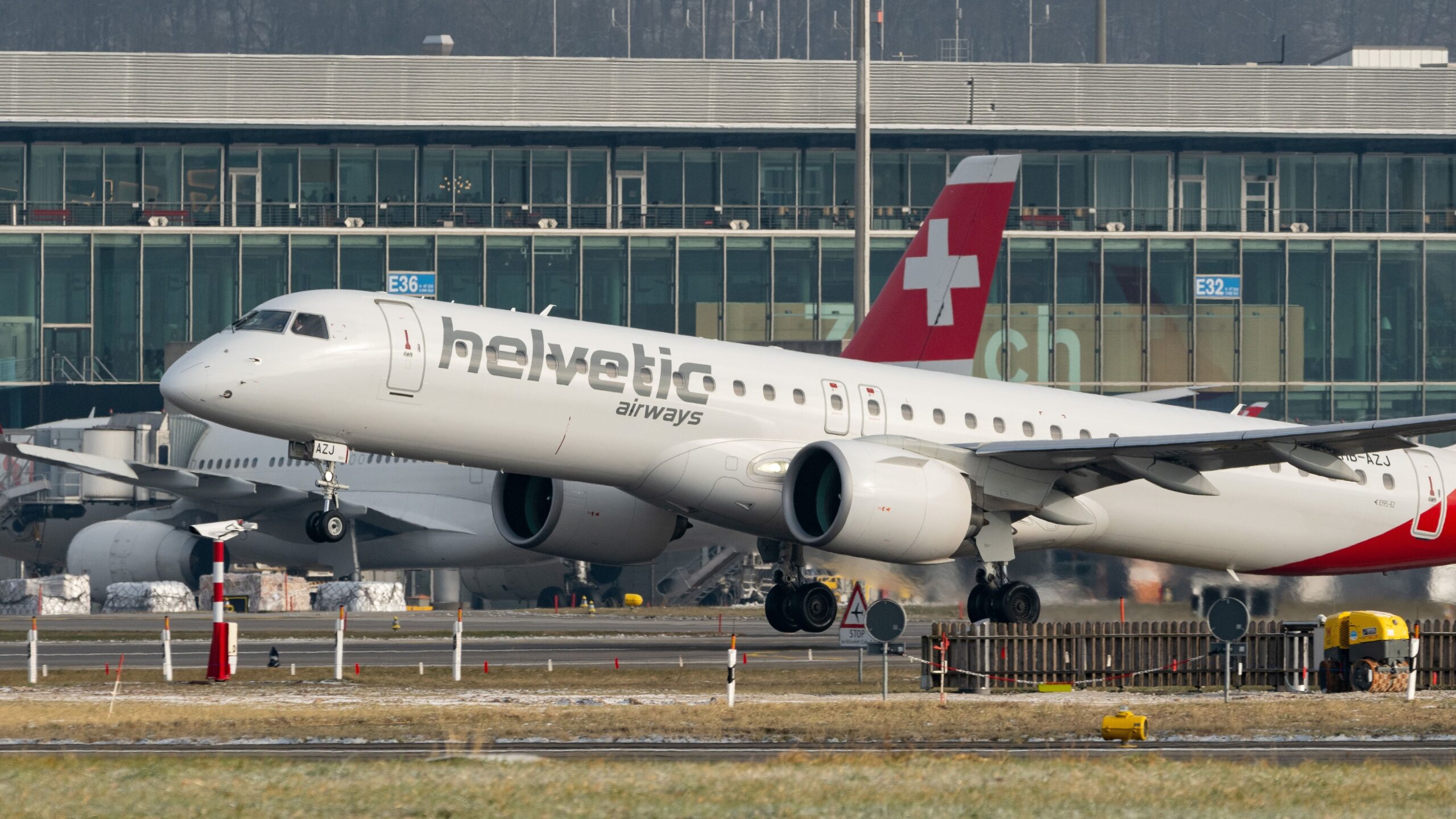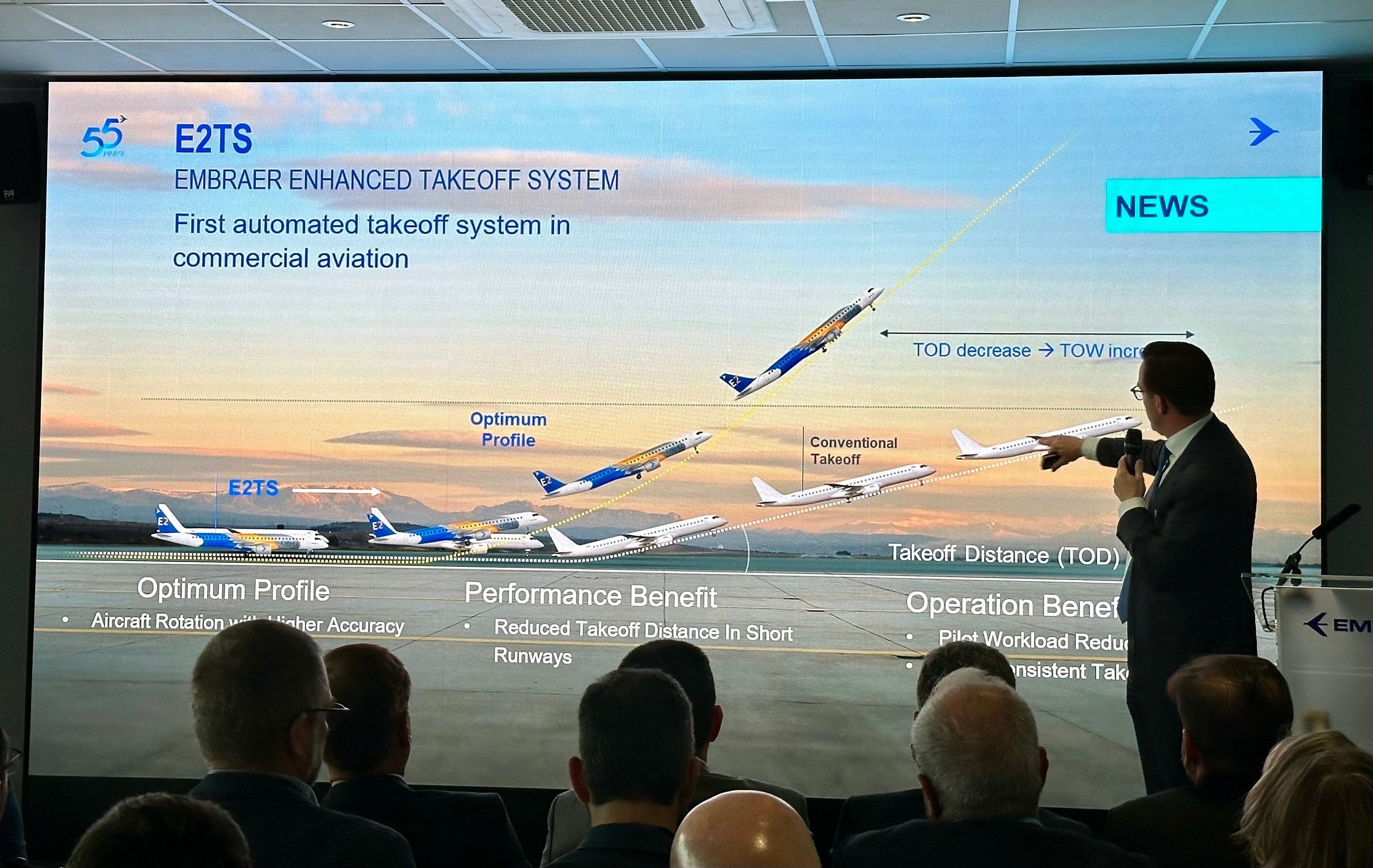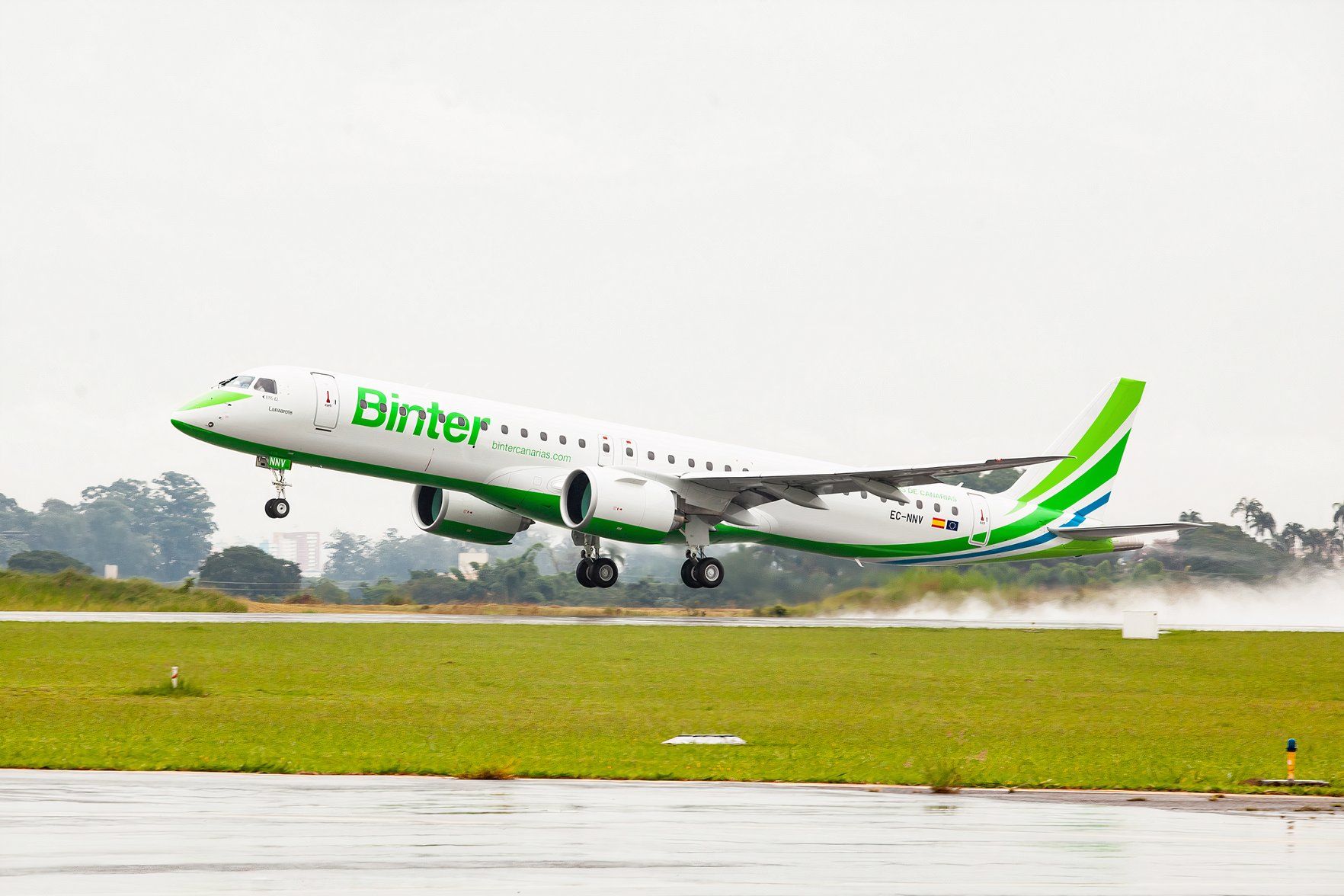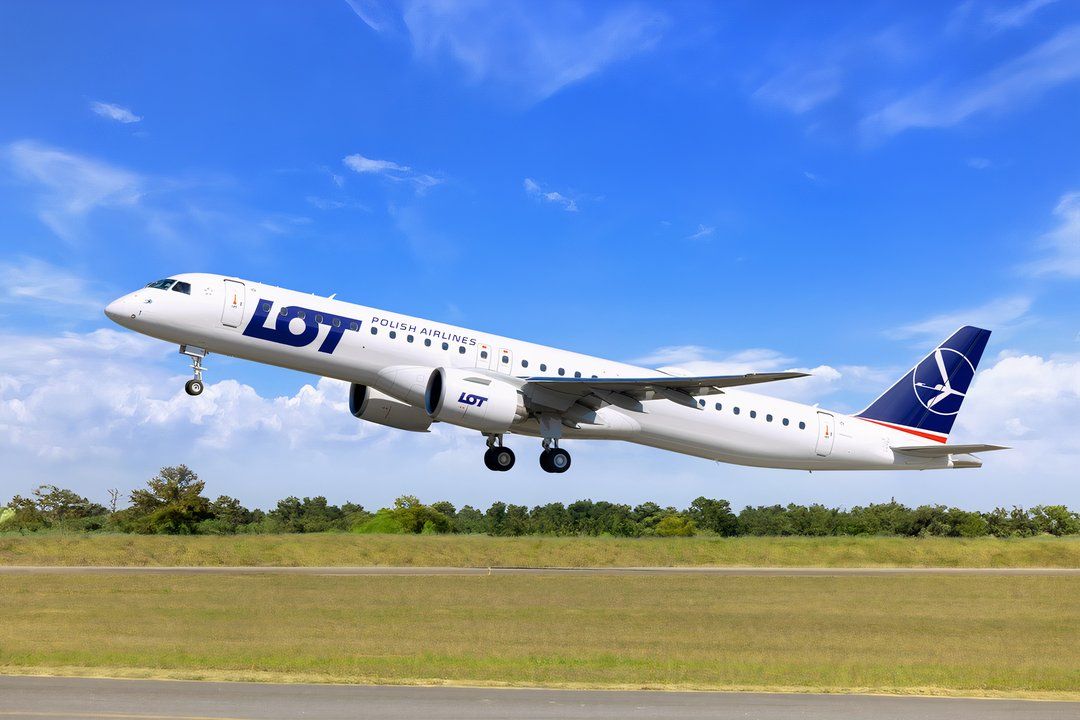During the Farnborough Airshow
earlier this year, Embraer introduced a new takeoff system it calls E2TS, which stands for Embraer Enhanced Takeoff System. It’s a world-first automated takeoff system, which will see the pilots not rotating the aircraft off the runway. Instead, the aircraft will do it itself.
At the time, the company stated it was already flying on some E2
jets, and highlighted the benefits to users of the system. Specifically, it promises to enable planes to fly further with the same payload, or to have a higher payload on the same route, or simply to use less thrust on takeoff. All that adds up to a very attractive proposition for airlines – more passengers or cargo, more destinations, or simply less fuel used.
Photo: Joanna Bailey | Simple Flying
At a media briefing last week, Embraer
revealed more details about the E2TS system and how it works, as well as its potential to influence the wider aviation industry, not just the E2 family of aircraft.
With E2TS, planes will rotate by themselves
Using inputs from three flight control computers and four smart probes, E2TS will see planes literally taking off by themselves. As described by Embraer executives, pilots will engage the system before commencing the takeoff roll.
During the roll, the pilot retains control of the aircraft as usual, using the rudder pedals to maintain the centerline. Accelerating through V1 to VR remains the same, and the callouts and checks between the two pilots remain the same.
The difference comes when the callout arrives from the pilot monitoring to rotate. Normally, at this point, the pilot flying would pull back on the yoke to raise the nose of the aircraft and begin leaving the ground. However, with E2TS, the pilot flying will do… nothing.
The pilot’s hands remain on the yoke at all times, just as in a normal takeoff. But the system will automate the rotation, controlling the aircraft’s pitch for a more efficient elevation. Should the pilot move the yoke with E2TS engaged, the system will automatically disengage and give control back to the humans in the cockpit.
Photo: Embraer
How E2TS works and why airlines will want it
The purpose of E2TS is to get the aircraft up off the ground faster. Embraer has figured out the optimal climb path for its E2 jets and has automated the process via this system. Crucially, Embraer can also format the system for other aircraft types, not just the E-Jets.
But why have a system take over the takeoff process instead of just training pilots to rotate faster? It’s because it’s not as straightforward as just implementing a steeper angle of attack during rotation.
When you’re dealing with a long aircraft like the E195-E2, executing a steeper angle of attack at the point of rotation risks a tail strike. The aircraft needs to get up above the ground a few feet before it has the clearance to rotate to the target angle of attack, which the E2TS system can do without issue.
“The aircraft will reach the screen height earlier compared to conventional takeoff performed by a human pilot. It’s then possible to convert this takeoff distance decrease to a takeoff weight increase. This allows a higher range for the same payload, or a higher payload for the same route, or even just a thrust reduction.” – Patrice London, Principal Performance Engineer at Embraer
Having a pilot do this manually would be risky and add unnecessarily to their workload. Embraer says that by having the fly-by-wire system automatically perform the rotation ensures maximum efficiency and safety in operations.
So what’s the advantage to airlines of adopting E2TS?
There are a few reasons airlines may well want to retrofit the E2TS system in their aircraft. For example:
- Ability to fly from shorter runways: As the aircraft reaches the mandatory ‘screen height’ of 35 feet faster, it becomes possible to operate from airports like London City, where the runaways are shorter.
- Fly further, or with more passengers and cargo: The improved takeoff distance and climb rate mean the maximum takeoff weight (MTOW) of the aircraft is increased. This opens opportunities to sell more seats, add more cargo, or keep the weight the same and add a little range to the flight. The exact numbers are still being worked out.
- Reduce pilot workload: Because rotation is being done automatically, pilots will be freed up to monitor the system and focus on safety.
- Improve safety: E2TS is embedded in the fly-by-wire system, a tried and tested element of modern aircraft with high levels of redundancy and reliability. With precision inputs from the onboard computer, the risk of tail strike is almost eliminated.
E2TS can be rolled out to other aircraft, not just Embraers
Like many advancements in aerospace today, E2TS is not a physical change but rather a software update, easily retrofitable to other aircraft. Embraer has already secured a couple of patents for the system and, pending certification, will make the technology available to other aircraft worldwide.
Essentially, any aircraft that uses fly-by-wire could have the E2TS retrofitted. Embraer has already received certification from ANAC, the Brazilian civil aviation authority, and expects the same from the FAA and EASA in the coming weeks. Embraer mentioned that, in test flights, the system was performing even better than anticipated.
Photo: Embraer
Some pilot training is expected. Embraer says that the system is very simple, and that mandatory classroom training should take half a day or less. In fact, the manufacturer believes any pilot could jump in and start flying with E2TS with only a short briefing. However, given the current climate in aviation, the company feels it is prudent to implement a mandatory short training session to ensure pilots are fully aware of the system and what it does.
“Because it’s a novel system, a first for the industry, we believe that training should be given to explain how the system works, so that the pilots have full awareness of how the system works, and they are prepared to operate it.” – Luís Carlos Affonso, Senior Vice President of Engineering and Technological Development at Embraer
The system is more applicable to long airplanes, so operators of aircraft like the A321 may find this sort of enhancement beneficial. Embraer notes that, even if there is no performance benefit to E2TS, the safety improvement will still be worth the upgrade, so they intend to make it available for many more aircraft types.
Embraer executives foresee E2TS being installed on all new E-Jets in the coming years. Whether operators of other aircraft also adopt it remains to be seen, but it’s a promising development.




